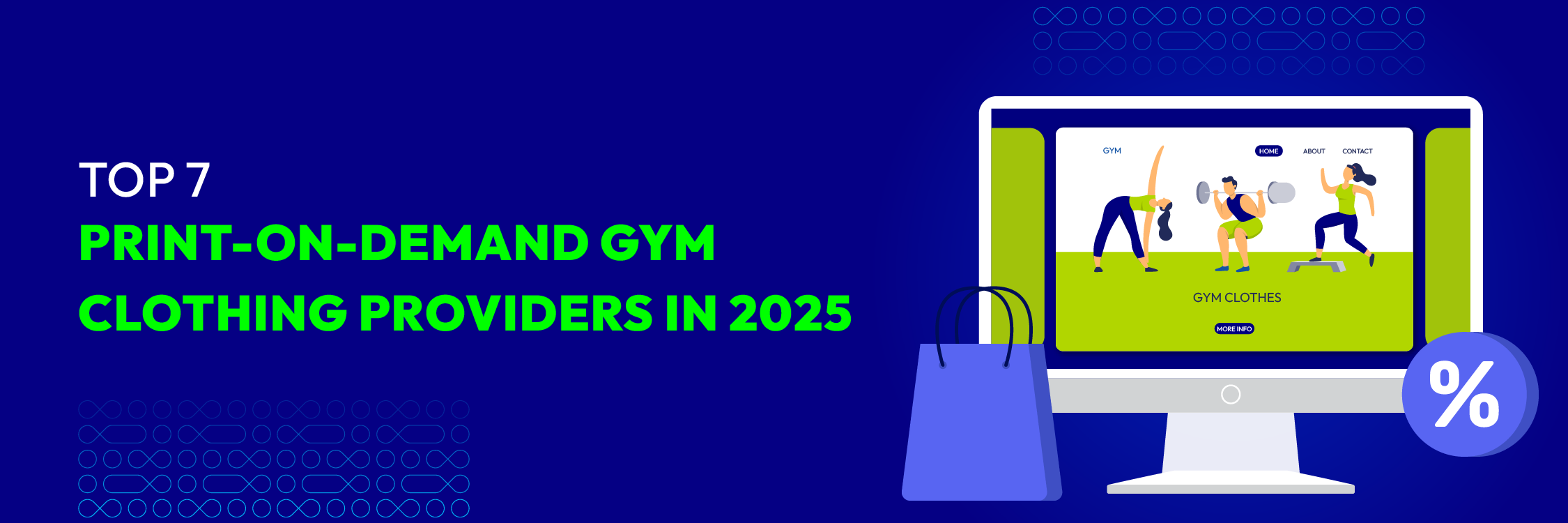Top Omnichannel Marketing Strategies in 2024 and Practical Examples
Summer Nguyen | 12-18-2024

A marketing strategy is a thing that must evolve and improve along with shifting market conditions, growing customer demand, changing TA expectations, etc. Otherwise, you may as well risk going stale and out-of-date with how you deliver your offers. Not mentioning huge customer segments you may be missing out on right now.
Realizing that, businesses and entrepreneurs alike go omnichannel in their marketing efforts - an approach deemed by many “the natural evolution of marketing”. This is because modern customers are pretty diverse in their choice of both social and commercial channels (which include a number of major social networks/forums/blogs and shopping formats - desktop, mobile, online/offline, etc.).
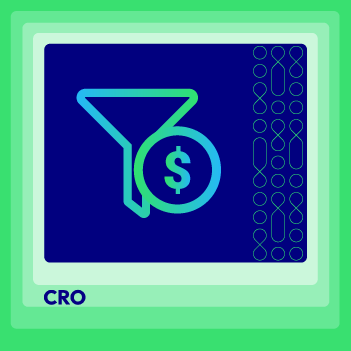
Improve the user experience, boost sales, and ultimately grow your business.
Check it out!What is Omnichannel Marketing?
Customers today have a good variety of ways to shop. And there is a common tendency to combine multiple channels and devices for the most individually convenient shopping experience. This includes, for instance, choosing products online and picking them up in a traditional physical store or ordering stuff online and paying for them via a smartphone.
You may have heard about multichannel marketing, which was supposed to be a sufficient answer to efficient promotion through multiple channels. But this approach becomes somewhat outdated as it is focused on separate efforts for separate channels.

Omnichannel marketing, in turn, concerns optimization of marketing efforts across all business touchpoints and puts a heavy focus on the overall customer experience.
Why is Omnichannel Marketing Strategy Important?
The ultimate importance of having an elaborate omnichannel marketing strategy lies in the opportunity to provide the fastest, most convenient, and flexible shopping experience for a bunch of totally different customer segments at once. It becomes all the more relevant with 87% of customers craving seamless shopping experiences while 98% of surveyed Americans confess to switching between multiple devices during the day for various reasons.

If you want to provide the most hassle-free experience for these demanding customers, it’s best to go omnichannel and start offering seamless opportunities. For this, start with a well-thought-out omnichannel marketing strategy that will help you better reach out to new customers and retain the existing ones.
Top Omnichannel eCommerce Marketing Strategies in 2024
Here are some well-tried-and-tested omnichannel marketing strategy examples to set you in the proper direction.

Create customer journeys
Mapping out your typical customer journey provides a deeper understanding of the customer experience you provide and how it can be improved. On top of that, you get to understand how your customers turn from prospects to returning buyers and which channels they prefer using exactly, which should be the first step of your omnichannel strategy creation.
At the very beginning, it’s good to clarify the goals of your customer journey mapping process - what’s the main point of doing it? What are you looking to achieve before all else? Pro tip - smooth and convenient customer processes should be the major focus. Start mapping a customer journey by outlining:
- major points of customer motivation
- key events during their shopping experience
- points of friction where you can influence them the most

You can gather and structure this info in good old Sheets. This is also where you can elaborate on your customer personas. For this, questionnaires come in more than handy - you can ask customers how they found out about your company, how much time they usually spend on the website, what they enjoy the most about the experience you provide, and so on.
It is also great to define all the touchpoints - i.e., points of customer interaction with your company. These usually include your online or physical store (obviously), your social media channels, your ads, your marketing efforts (email marketing and such), your site’s reviews on other resources, etc.
Segment customers
You simply cannot target too many customer personas at once. And to make your targeting structured and easier to handle, yet keep it efficient, segment your audience of customers by:
- interests
- location
- age
- spending rates
- preferred devices
- browsing and buying history, etc.

This will enable you to “hit the spot” every time and make the most relevant offers to particular segments of users through channels they prefer. For one thing, there’s no use sending a regular newsletter through your email marketing efforts to a younger audience of customers that may as well not check their email at all (unless they need to confirm a password or something like that).
Choose marketing channels
When it comes to particular channels of customer interaction and impact, choose wisely. Keep in mind the above information about different customer segments preferring different channels. The most common and fruitful options right now are:
- Social media platforms - Facebook is the king here, with the vast majority of companies and entrepreneurs preferring it as the primary channel for marketing content distribution.
- Advertising - ads are also very efficient at generating customer demand, helping new customers learn about your offers without any previous intention, make impulsive purchases, and simply checking out what you have to offer.
- Push-notifications - especially relevant for the mobile audience of customers, push-notifications efficiently deliver your marketing points and product offers in the most non-obtrusive format (customers enable them at will and can easily check or deny them via a smartphone).
- Email - email marketing is still alive and even more than that - it is among the most efficient marketing channels for more adult audiences and, especially, for business clients and wholesale customers.
- SMS - sending offers via traditional SMS messages does the trick as well, but it mostly goes for the already acquired buyers who left their phone number on your website.

Thus, you can use different channels for different user segments, making every other customer comfortable with your selling point delivery.
A Complete Marketing Solution for Holiday Seasons
Discover an all-in-one marketing pack
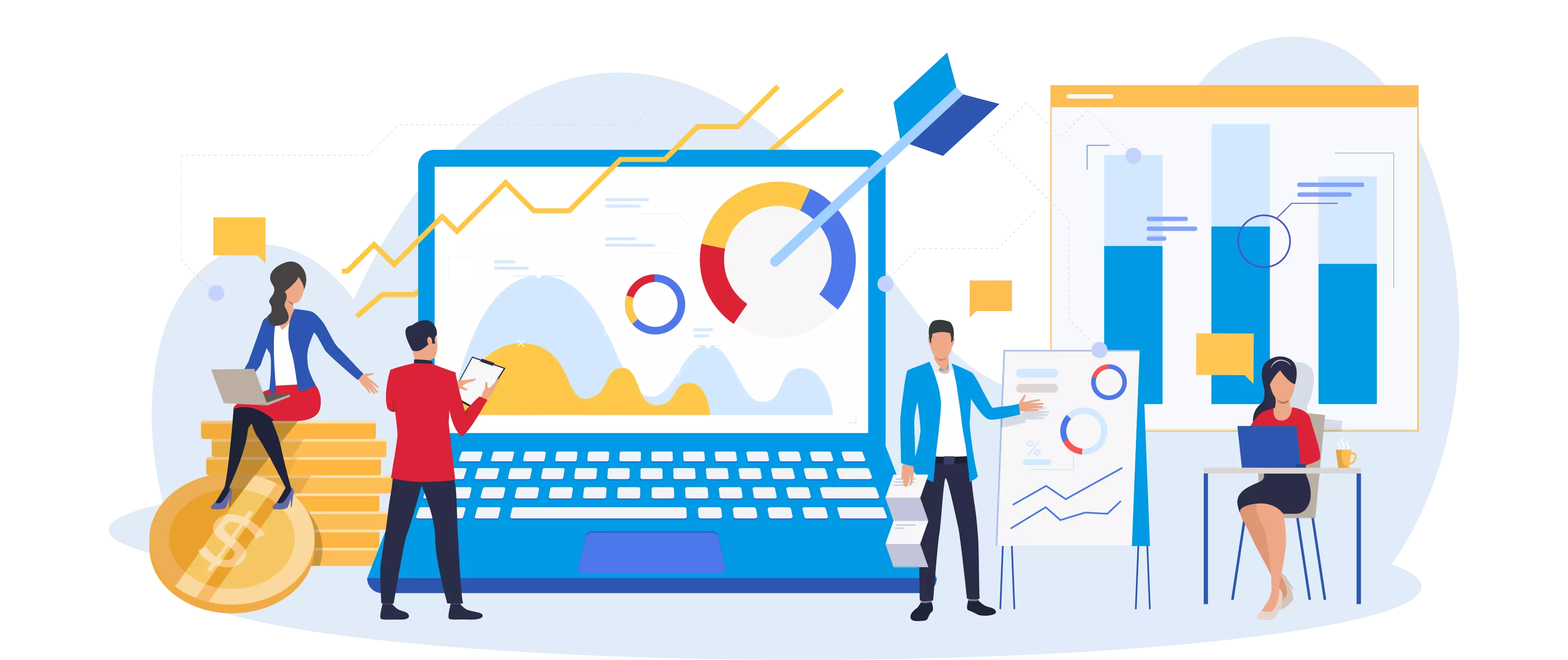
Use omnichannel marketing apps
To make omnichannel marketing processes simpler and more efficient, use specialized software. Omnichannel is pretty well supported in popular eCommerce platforms like Magento, Shopify Plus, BigCommerce, and a bunch of others. For most of them, there are dozens of available omnichannel apps you can use depending on what platform your store is based on.

Such apps can serve various purposes - help remind customers about abandoned shopping carts, optimize SEO, etc. For instance, these solutions for Shopify will help you share your marketing message across multiple channels (mentioned above) in a more automated fashion:
- Avada Marketing Automation - a solution focused on outlining your customer segments and boosting conversion rates via flexible newsletter campaigns, automated and mass SMS, handy popups, in-depth reports, and more.
- Zendesk Support - a customer support boosting tool that enables you to faster respond to user inquiries, provides connection opportunities through multiple channels, and supports automation.
- Firepush - a powerful app for creating and launching elaborate SMS, email, and push-notification marketing campaigns, handling abandoned cart recovery, and connecting with customers via several relevant channels.
- ShipRelay Fulfillment - a complex solution for handling on-demand goods delivery, achievement management, and warehousing in one place, which can be a real life-saver when it comes to stock organization and synchronization and optimization of the “customer-delivery service” experience you offer.
Explore the high-rated available apps in the market and you will certainly find a number of options to smooth out and enhance your omnichannel marketing practices.
Optimize buying experience
For a truly efficient campaign, you need an omnichannel marketing, and it is essential to make sure that customers are equally comfortable when purchasing your goods from any possible device, using any possible ordering and payment format. They also should feel safe about their payments and user data. To achieve this, you’ll have to work on:
- Mobile-friendliness - in the US alone, the total share of mobile commerce in terms of all eCommerce retail sales reached 53.9% in 2021. This means that about half of your customer audience prefers browsing products and shopping via mobile. This also means that mobile optimization is crucial so make sure your website has a well-running mobile version, with optimized images and other interface objects.
- Trust signals - certificates by third-party review platforms or sites, awards and achievements, regulations compliance (such as GDPR), security standards - put all of that on display if you can to stimulate trust towards your online store.
- Flexible shopping - customers should have options. This includes providing several options (apart from regular credit card and PayPal, ideally, as many payment gateway integrations as possible) and shipping options, as well as enabling social media integrations.
- Return and refund policies - these must be as convenient and customer-oriented as possible. It depends heavily on your enterprise powers and other commercial specifics, but your goal should be putting your customers’ convenience above some minute business sacrifices that will pay off in the long run.

All in all, using a flexible, reliable eCommerce platform, you should be able to handle all of the above aspects without complications.
User Experience Solutions for Magento 2
Significantly improve shopping experience for your online storeLaunch advertising campaigns
Ad campaigns are a must. And the most common methods to launch them still include Google Ads, Facebook Ads, as well as ads on other social media platforms. Thus, Google Ads can help you accumulate traffic straight from the most popular search engine in the world.

On the other hand, depending on your TA specifics, targeted social media advertising is a sure way to boost conversions as you satisfy the particular demand of interested potential buyers.
We’d strongly recommend considering paid advertising as a true “lifehack” in terms of getting more conversions. Thus, you can scale your ads in line with your budget to eventually get a good return on investment.
Test, test, and test again
As you can see, there are many ways you can influence your target and potential customers with your omnichannel marketing efforts. But what should work best for your particular offers? Your business format? Your concrete target audience of buyers? This is where A/B testing can be used to the ultimate advantage.

Conduct a number of A/B test iterations - e.g., try different advertising formats via different marketing channels based on your TA persona. Compare tactics and see where you get the most output and feedback. This way, you should be able to narrow down the most fitting tactics for your particular business.

Implement deeper analysis - Make better decisions with effective advanced statistic reports
Check it out!Benefits of Choosing an Omnichannel Strategy
Most brands now recognize the effectiveness of an omnichannel approach despite its complexity. Properly executed, it offers numerous benefits. Modern consumers, inundated with messages from various brands, are increasingly selective about engagement. Omnichannel customer interactions serve as a brand differentiator, providing the following advantages:
Higher Purchase Rates with Omnichannel Marketing
The results derived from implementing an omnichannel approach can be influenced by various factors. However, it is noteworthy that, across diverse industries, marketers employing a minimum of three channels to engage their audience witness a purchase rate that is 287% higher than those confining themselves to a single channel.
Increased Spending from Omnichannel Campaigns
Beyond heightened purchase rates, customers engaged through omnichannel campaigns not only demonstrate a greater likelihood of making purchases but also exhibit a propensity to spend more. Recent statistics indicate that marketing initiatives spanning at least three channels prompt buyers to spend 13% more compared to single-channel campaigns. This implies that omnichannel customers not only make more frequent purchases but also contribute more significantly to overall spending.
Enhanced Loyalty from Existing Customers
Ecommerce marketers stand to gain substantial benefits from embracing an omnichannel strategy. Recent data reveals that such an approach results in retention rates that are 90% higher than those typically observed with a single-channel strategy. Given the comparative ease and cost-effectiveness of retaining loyal customers as opposed to continually acquiring new ones, the adoption of an omnichannel strategy not only leads to increased revenue but also substantial savings.
Omnichannel marketing examples
Explore the success stories of these brands that have effectively implemented omnichannel strategies:
Starbucks
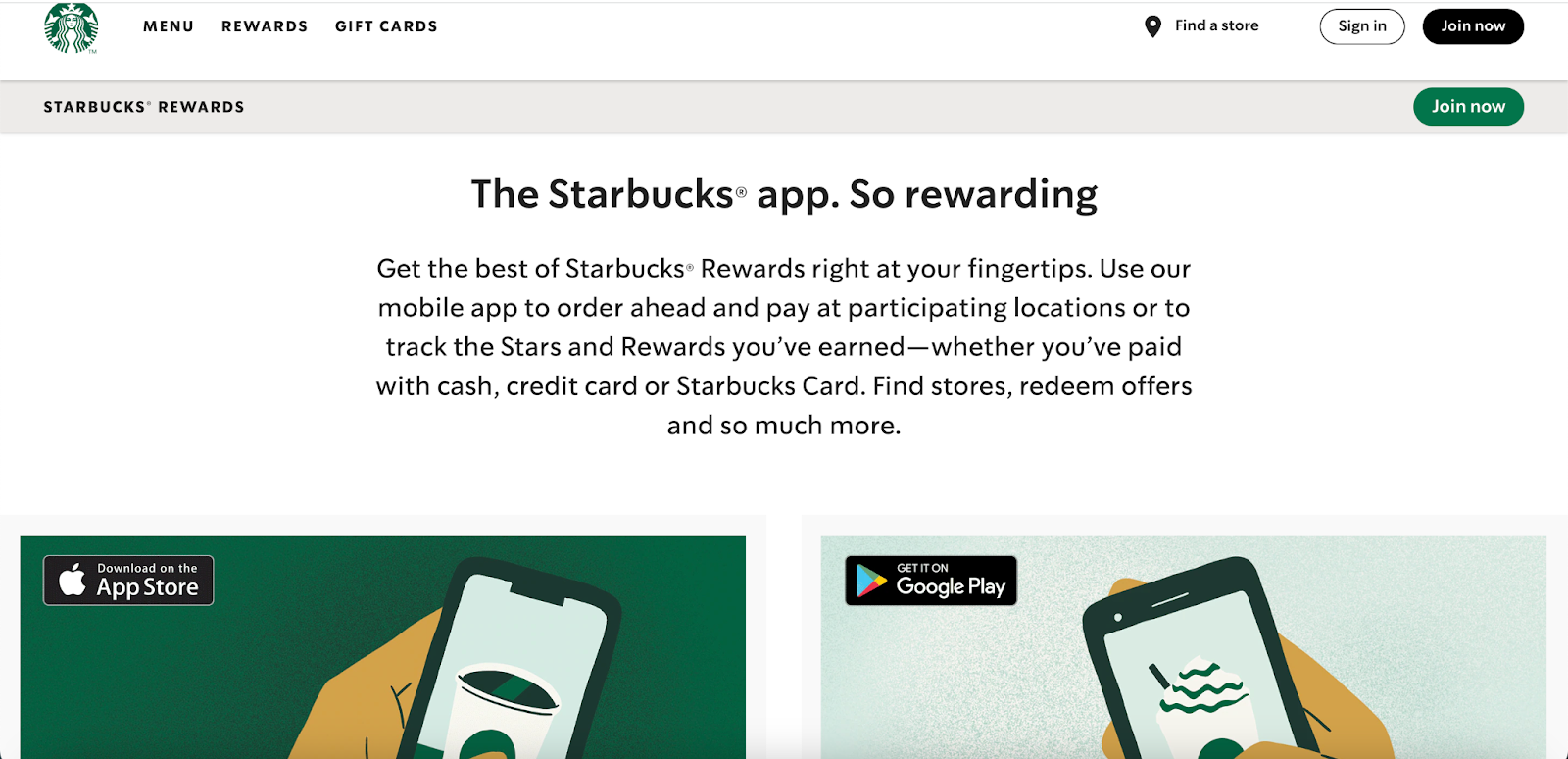 Starbucks prioritizes consumer convenience by seamlessly integrating the mobile experience with in-store interactions through its mobile rewards app. Users can conveniently reload their cards from either their phone or desktop computer. The app’s payment feature rewards users with points redeemable for a complimentary coffee. Furthermore, customers can bypass morning queues by placing advance orders.
Starbucks prioritizes consumer convenience by seamlessly integrating the mobile experience with in-store interactions through its mobile rewards app. Users can conveniently reload their cards from either their phone or desktop computer. The app’s payment feature rewards users with points redeemable for a complimentary coffee. Furthermore, customers can bypass morning queues by placing advance orders.
Walgreens
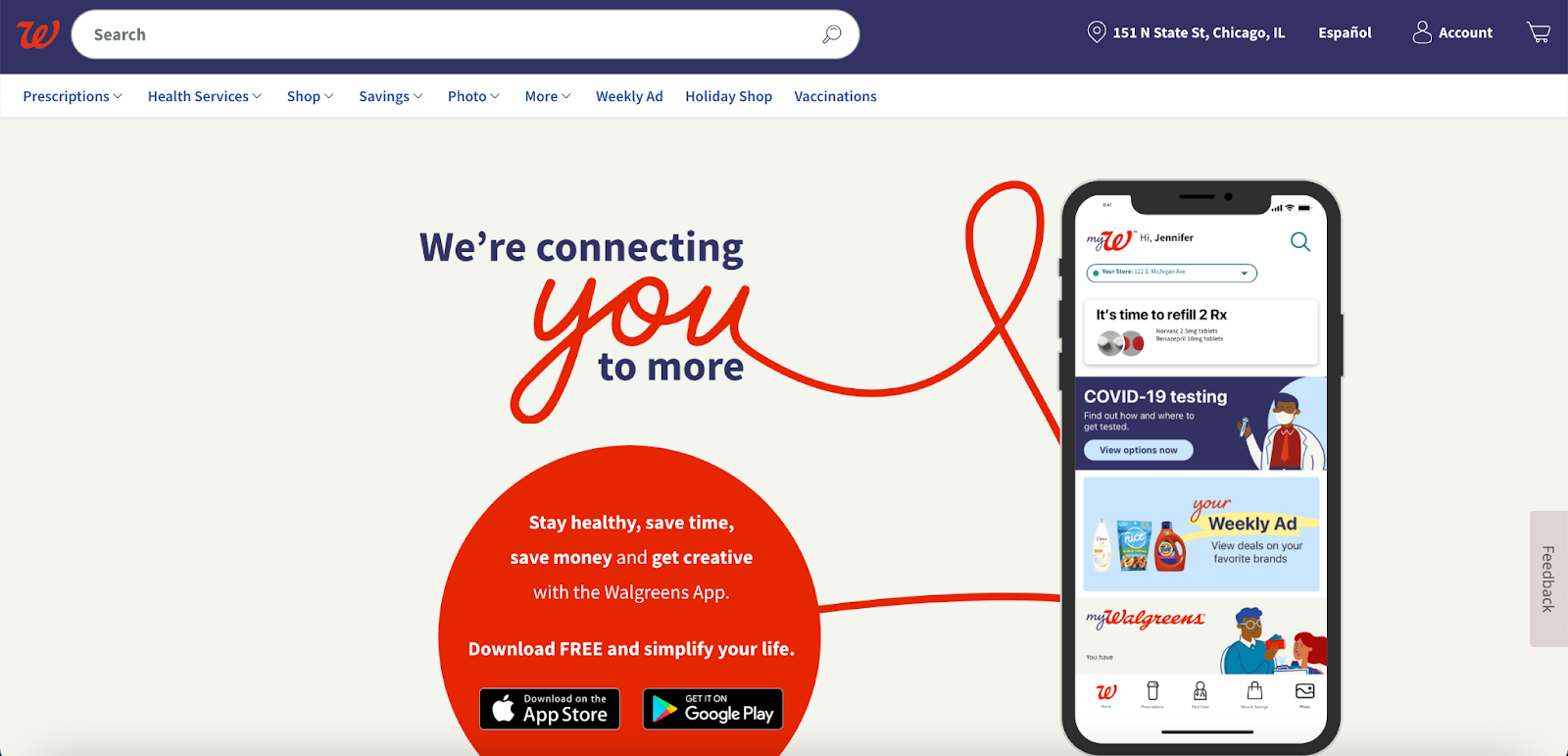
Walgreens has developed a tailored mobile app streamlining prescription refills, allowing customers to easily pick up their medications in-store. The app also provides information on specific store inventories, aiding customers in deciding which location to visit for their needs.
Timberland

Timberland enhances the in-person customer experience by blending online convenience through the implementation of near field communication (NFC) technology. Timberland introduces Touchwalls in its stores, offering additional information on their shoes. Customers can then add these items to their online shopping list or make in-store purchases. Additionally, Timberland employs a product recommendations engine to expose customers to lesser-known products based on their preferences.
Summary
It might seem a very broad topic to explore, but you just need to start trying things and you will certainly see results. The thing is to find your own approach to omnichannel marketing. Start from the most affordable tips from our article, like customer journey mapping and customer segmentation.
In the long run, you can safely expect a felt expansion of marketing opportunities and enhanced relationships with your customers, which means more conversions hence more profits hence higher market positions for your business.
Author bio Sara Johnson is a B2B digital marketing expert with a mission to help Shopify store owners to take their businesses to the next level. Her articles educate entrepreneurs on topics of eCommerce technology and marketing strategies. Her expertise comes from eight years of working with many e-commerce businesses.



